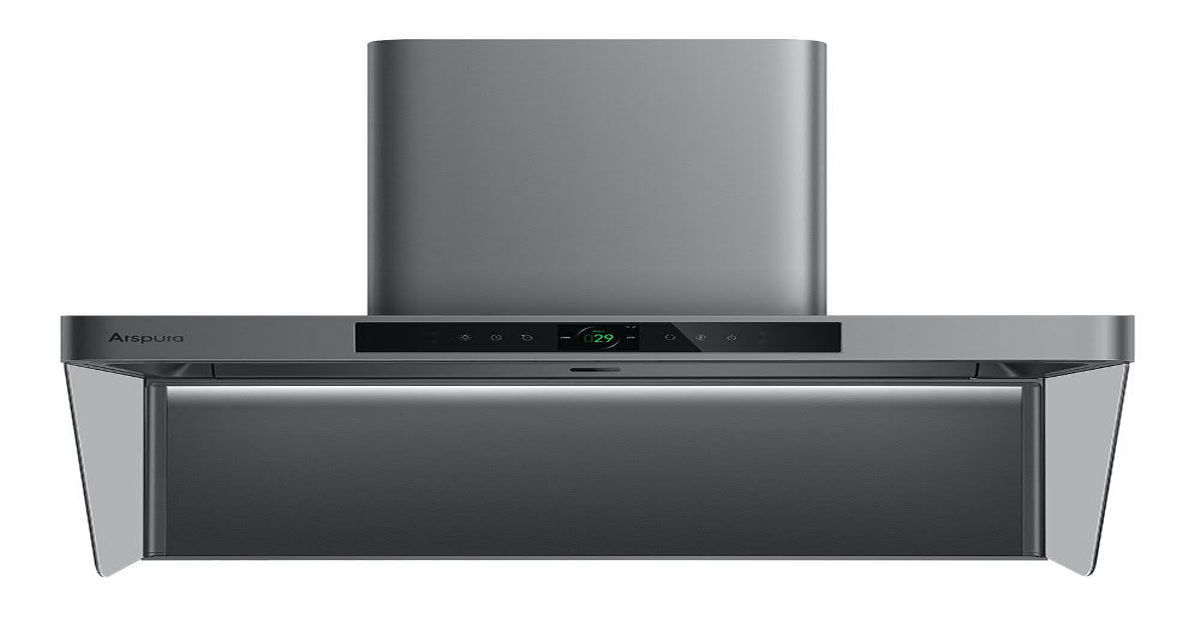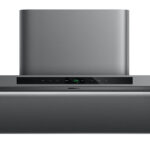The kitchen is the heart of every home, and maintaining a clean, comfortable cooking environment is essential for both health and enjoyment. Stainless steel ventilation hoods have become the gold standard for modern kitchens, offering unmatched durability, performance, and style. These powerful appliances work tirelessly to remove smoke, grease, odors, and excess heat, ensuring your kitchen remains fresh and inviting even during the most intensive cooking sessions.
Choosing the right ventilation hood can transform your cooking experience while protecting your home from the damaging effects of airborne contaminants. Whether you’re a casual home cook or a culinary enthusiast, understanding what makes a ventilation hood truly effective is crucial. This comprehensive guide explores the essential features, benefits, and considerations for selecting top-performing stainless steel ventilation hoods that deliver exceptional air quality management while complementing your kitchen’s aesthetic appeal.
Introduction to Stainless Steel Ventilation Hoods
Stainless steel ventilation hoods represent a sophisticated solution for modern kitchen air management, combining industrial-grade performance with timeless elegance. These essential appliances capture and exhaust cooking byproducts before they can permeate your home, protecting walls, ceilings, and furnishings from grease buildup and discoloration. The inherent properties of stainless steel make it an ideal material for this demanding application—it resists corrosion from moisture and acidic cooking vapors, maintains its appearance through years of heavy use, and provides a hygienic surface that’s easy to sanitize. Beyond functionality, stainless steel hoods serve as architectural focal points that anchor kitchen design schemes, whether you prefer contemporary minimalism or professional-grade aesthetics. Their reflective surfaces amplify natural and artificial light, making kitchens feel more spacious and inviting. The material’s neutral tone harmonizes effortlessly with virtually any color palette or cabinetry style, ensuring your investment remains visually relevant through evolving design trends while delivering consistent, reliable ventilation performance.
Key Features of High-Performance Range Hoods
The most effective ventilation hoods distinguish themselves through several critical performance characteristics that work in concert to deliver superior air management. Motor power stands as the foundation, with high-capacity systems measured in cubic feet per minute (CFM) determining how quickly contaminated air gets expelled from your cooking space. Professional-grade units typically feature multi-speed blowers that allow you to adjust extraction intensity based on cooking methods, from gentle simmering to high-heat searing. Equally important is noise reduction technology, which employs insulated motor housings, aerodynamic fan blade designs, and vibration-dampening mounts to minimize operational sound without sacrificing suction strength. Modern high-performers integrate intelligent features like automatic sensors that detect heat and smoke levels, adjusting fan speeds accordingly without manual intervention. Efficient baffle or mesh filters capture grease particles before they enter ductwork, while LED lighting systems illuminate cooking surfaces with bright, energy-efficient illumination. The best designs incorporate seamless construction with minimal crevices where grease can accumulate, facilitating easier cleaning and maintenance. Premium models also feature variable-height chimneys and telescoping ductwork that accommodate different ceiling heights, ensuring proper installation regardless of your kitchen’s architectural constraints while maintaining the sleek, professional appearance that defines exceptional stainless steel ventilation systems.
The Importance of Smoke Removal in the Kitchen
Effective smoke removal transcends mere comfort—it’s fundamental to protecting your health, preserving your home’s structural integrity, and maintaining property value. Cooking smoke contains particulate matter, volatile organic compounds, and combustion byproducts that accumulate in respiratory systems, potentially triggering allergies, asthma, and long-term health complications. Without proper ventilation, these airborne contaminants settle on surfaces throughout your home, creating stubborn residue that discolors paint, yellows ceilings, and embeds itself into fabrics and upholstery. The moisture carried in cooking vapors promotes mold growth in hidden spaces like wall cavities and above cabinets, compromising indoor air quality and requiring costly remediation. Grease-laden air creates fire hazards when it condenses in ductwork or on kitchen surfaces, while persistent odors diminish your home’s appeal and comfort. A high-performance stainless steel ventilation hood addresses these concerns by establishing negative pressure above your cooktop, immediately capturing contaminants at their source before they disperse. This proactive approach maintains pristine air quality, reduces cleaning demands, extends the lifespan of kitchen finishes, and creates a healthier environment for everyone who enters your culinary space.
Choosing the Right Stainless Steel Ventilation Hood
Selecting the ideal ventilation hood requires balancing technical requirements with aesthetic preferences and budgetary considerations. Start by measuring your cooktop width—your hood should extend at least three inches beyond each side to effectively capture rising contaminants. Calculate the necessary CFM rating by multiplying your cooktop’s BTU output by 0.01 for gas ranges, or allocating 100 CFM per linear foot of cooking surface for electric models. Consider your kitchen’s layout when deciding between ducted systems that exhaust outdoors and ductless models that recirculate filtered air, recognizing that ducted configurations provide superior performance. Ceiling height influences chimney extension needs, while cabinet depth determines whether wall-mounted, under-cabinet, or island installations work best. Evaluate your cooking habits—frequent high-heat cooking demands more powerful extraction than occasional meal preparation. Budget allocation should prioritize motor quality and CFM capacity over decorative elements, as performance directly impacts your kitchen’s air quality. Examine control interfaces, preferring intuitive touch panels or mechanical switches based on personal preference. Verify that the hood’s finish matches your existing appliances, choosing brushed, polished, or commercial-grade stainless steel accordingly. Review warranty coverage and manufacturer reputation to ensure long-term support, and confirm that installation requirements align with your kitchen’s electrical capacity and ventilation infrastructure before finalizing your selection.
Maintenance Tips for Stainless Steel Ventilation Hoods
Regular maintenance ensures your stainless steel ventilation hood operates at peak efficiency while preserving its lustrous appearance for decades. Begin by establishing a weekly cleaning routine that involves wiping exterior surfaces with a microfiber cloth dampened with warm water and mild dish soap, always following the grain direction to prevent scratching. For stubborn grease spots, apply a specialized stainless steel cleaner or a paste of baking soda and water, letting it sit briefly before gently buffing away residue. Filter maintenance demands particular attention—remove and clean mesh or baffle filters every two to four weeks depending on cooking frequency. Soak metal filters in hot, soapy water or run them through your dishwasher on a heavy cycle, ensuring they’re completely dry before reinstallation to prevent water spots. Replace charcoal filters in ductless systems every three to six months, as they cannot be cleaned once saturated. Inspect fan blades quarterly by accessing the motor housing, carefully wiping away accumulated grease that reduces efficiency and increases noise. Check ductwork connections annually for secure fittings and clear pathways, removing any blockages that restrict airflow. Test lighting elements regularly, replacing burned-out bulbs promptly to maintain proper cooking surface illumination. Schedule professional inspections every two years to verify motor performance, electrical connections, and overall system integrity, addressing minor issues before they escalate into costly repairs while maximizing your ventilation hood’s operational lifespan.
Stylish Design Options for Your Kitchen
Stainless steel ventilation hoods offer remarkable versatility in design expressions that elevate kitchen aesthetics while maintaining functional excellence. Contemporary wall-mounted canopy styles create dramatic focal points with clean geometric lines and seamless surfaces that complement modern minimalist interiors. Island hoods suspended from ceilings make bold architectural statements, their sculptural presence defining open-concept spaces while providing 360-degree visual appeal. Under-cabinet models deliver discreet ventilation for compact kitchens, tucking neatly beneath cabinetry without sacrificing performance. Professional-style designs feature commercial-grade construction with visible rivets, heavy-gauge steel, and substantial presence that appeals to culinary enthusiasts seeking restaurant-quality ambiance. Glass accent panels, decorative chimney covers, and customizable trim options allow personalization that reflects individual taste. The finish itself offers choices—brushed stainless provides subtle sophistication with fingerprint resistance, while polished surfaces create mirror-like brilliance that amplifies light. Black stainless steel alternatives introduce contemporary contrast for those seeking departure from traditional tones. Integrated lighting transforms hoods into luminous design elements, while decorative backsplashes and coordinating appliances create cohesive visual narratives that unify kitchen environments.
Energy Efficiency and Stainless Steel Ventilation Hoods
Modern stainless steel ventilation hoods incorporate energy-efficient technologies that reduce operational costs while maintaining powerful performance. LED lighting systems consume up to 75% less electricity than traditional incandescent bulbs, providing superior illumination that lasts for years without replacement. Variable-speed motors allow you to match extraction power to actual cooking needs, running at lower settings for everyday tasks and reserving maximum capacity for intensive cooking sessions. This adaptive approach significantly reduces energy consumption compared to single-speed units that operate at full power regardless of need. Energy Star certified models meet strict efficiency guidelines, featuring optimized airflow designs that move more air per watt of electricity consumed. To maximize energy savings, run your hood only when actively cooking and switch to lower speeds once initial smoke and steam dissipate. Ensure proper duct sizing and routing to minimize resistance that forces motors to work harder, consuming excess energy. Clean filters regularly to maintain unrestricted airflow that allows efficient operation at lower power levels. Consider installing a timer or smart controls that automatically shut off the hood after cooking concludes, preventing unnecessary runtime. Ducted configurations generally offer better energy efficiency than ductless models, as they require less motor power to achieve effective ventilation without the resistance of recirculation systems and filter media.
Stainless Steel Ventilation Hoods vs. Other Materials
When comparing ventilation hood materials, stainless steel emerges as the superior choice across multiple performance and longevity metrics. Wood hoods, while offering rustic charm, absorb grease and moisture that lead to warping, discoloration, and eventual deterioration. They require frequent refinishing to maintain appearance and pose fire risks when grease accumulates near heat sources. Plastic or composite materials lack the structural integrity for high-heat environments, often cracking or yellowing under prolonged exposure to cooking vapors and elevated temperatures. These materials also emit odors when heated and cannot withstand the rigorous cleaning required for commercial-grade performance. Aluminum hoods provide lightweight alternatives at lower costs, but they dent easily, corrode when exposed to acidic cooking vapors, and develop pitting that becomes impossible to clean effectively. Copper hoods deliver stunning visual impact but demand extensive maintenance to prevent tarnishing, require specialized cleaners, and carry premium price points that exceed most budgets. Glass hoods offer contemporary aesthetics but show every fingerprint and grease spatter, demanding constant attention to maintain clarity. Stainless steel outperforms these alternatives through its non-porous surface that resists bacterial growth, immunity to rust and corrosion, ability to withstand extreme temperatures without degrading, and minimal maintenance requirements. Its strength allows thinner gauge construction without sacrificing durability, while its recyclability makes it the environmentally responsible choice. The material’s heat resistance prevents warping near high-output burners, and its chemical stability means harsh degreasers won’t damage surfaces during deep cleaning sessions, ensuring your investment maintains both function and beauty throughout decades of demanding kitchen use.
Real-World Applications and Testimonials
Stainless steel ventilation hoods prove their worth across diverse cooking environments, from compact urban apartments to expansive gourmet kitchens. In professional home kitchens, culinary enthusiasts rely on high-CFM models to handle multiple burners operating simultaneously, particularly when searing steaks or wok-cooking at extreme temperatures. One avid home chef reports that upgrading to a 900-CFM stainless steel island hood eliminated the persistent grease film that previously coated nearby surfaces, transforming her open-concept space into a truly functional cooking theater. Families with allergy sensitivities have experienced dramatic improvements in respiratory comfort after installing powerful ventilation systems that capture airborne particles before they circulate throughout living areas. A restaurant consultant shares that homeowners increasingly request commercial-style stainless hoods to replicate professional kitchen performance, noting that these installations consistently receive praise for both functionality and visual impact. Renovation specialists observe that kitchens featuring quality stainless steel hoods command higher resale values and attract buyers faster than comparable homes with standard ventilation. Home supply retailers like Arspura have noted growing consumer interest in ventilation solutions that combine performance with design versatility, reflecting a broader trend toward creating healthier, more functional kitchen environments. One testimonial highlights how a wall-mounted canopy hood became the defining design element in a kitchen remodel, with guests consistently commenting on its striking presence. These real-world experiences confirm that investing in premium stainless steel ventilation delivers measurable benefits in air quality, home preservation, cooking enjoyment, and property value enhancement.
Elevating Your Kitchen with Premium Ventilation
Stainless steel ventilation hoods represent an essential investment for anyone committed to creating a healthier, more functional, and aesthetically pleasing kitchen environment. By effectively removing smoke, grease, odors, and excess heat, these powerful appliances protect your home’s structural integrity while safeguarding your family’s respiratory health. The superior material properties of stainless steel—including corrosion resistance, durability, and timeless visual appeal—ensure your ventilation system performs reliably for decades while maintaining its lustrous appearance. When selecting a ventilation hood, prioritize motor power, noise reduction technology, and proper sizing to match your cooking habits and kitchen layout. Regular maintenance, including filter cleaning and surface care, maximizes performance and longevity. Whether you choose a dramatic island hood, a sleek wall-mounted canopy, or a discreet under-cabinet model, the right stainless steel ventilation hood transforms your kitchen into a space where culinary creativity flourishes without compromise to air quality or comfort. As you embark on your kitchen upgrade journey, remember that this investment extends beyond immediate functionality—it enhances your daily cooking experience, preserves your home’s value, and contributes to a healthier living environment for years to come.







